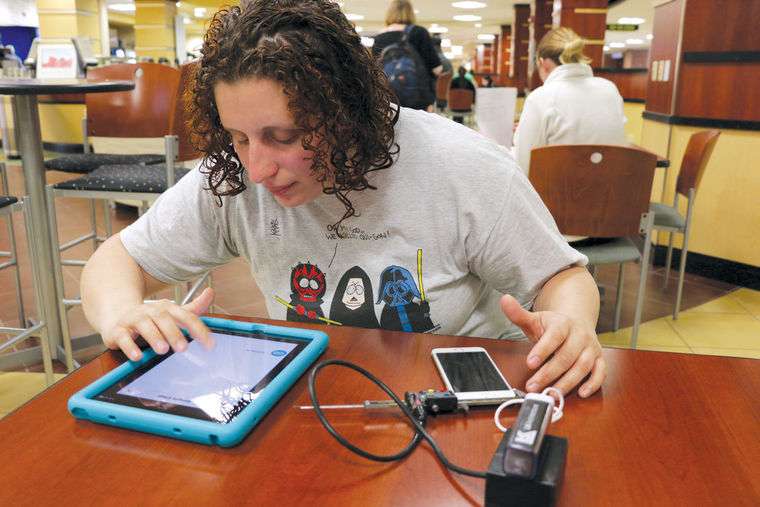Digital caliper levels playing field for blind pre-med student

Senior computer science major Daryl Claassen thought building a digital caliper for a blind student was going to be a weekend project.
"It's never as easy as it looks, but also there are a lot of things you actually don't know until you start getting your hands dirty with a project," said Claassen, an Army infantry veteran and Airborne soldier.
After almost a month, Claassen and engineering students Richard St Aubin and Vlad Holovan finished the caliper and created a level playing field for pre-medical student Emily Schlenker. A caliper is a device that measures the distance between two opposite sides of an object.
"This gives me the opportunity to systematically take data and do it independently," Schlenker said.
Schlenker was born blind. Many of her science classes require the device, which made classes difficult or impossible for her to take because it required being able to read the devices measurements.
"I don't want to feel like other students are doing the bulk of the hands-on work for me," Schlenker said.
Schlenker now uses the caliper in her physics laboratory, and plans to take an anthropology class next semester because of her new device.
The caliper is "game-changing" for Schlenker, who wants to be an osteopathic doctor in a rural or underserved setting.
The digital caliper is one less barrier for Schlenker as she pursues a higher education as a mother and neuromuscular massage therapist. Finding textbooks in braille and the low expectations people have for blind students are other obstacles she faces daily.
The closest replica of the device on the market is about $900. Claassen and his team made their caliper for less than $50.
"This device is super cheap so if you want to streamline it, it's pretty easy," Holovan said.
Claassen and his team created the digital caliper by connecting its LCD display to a Bluetooth device on an iPad or iPhone. Schlenker can turn on voice-over and the accessibility features to read the measurement aloud to her.
Other than getting reimbursed for the parts to make the caliper from the WSU Foundation, Claassen has not received any academic credit or financial reimbursement for his time and effort.
"I strongly believe that they need to have college credit for this kind of work because this thing is going to change so many classes for me," Schlenker said.
Claassen spent nearly 80 hours working on the caliper, and he still hopes to make some improvements.
"We are not necessarily finished at this point," Claassen said. "We want to make it better."
Provided by Wichita State University




















